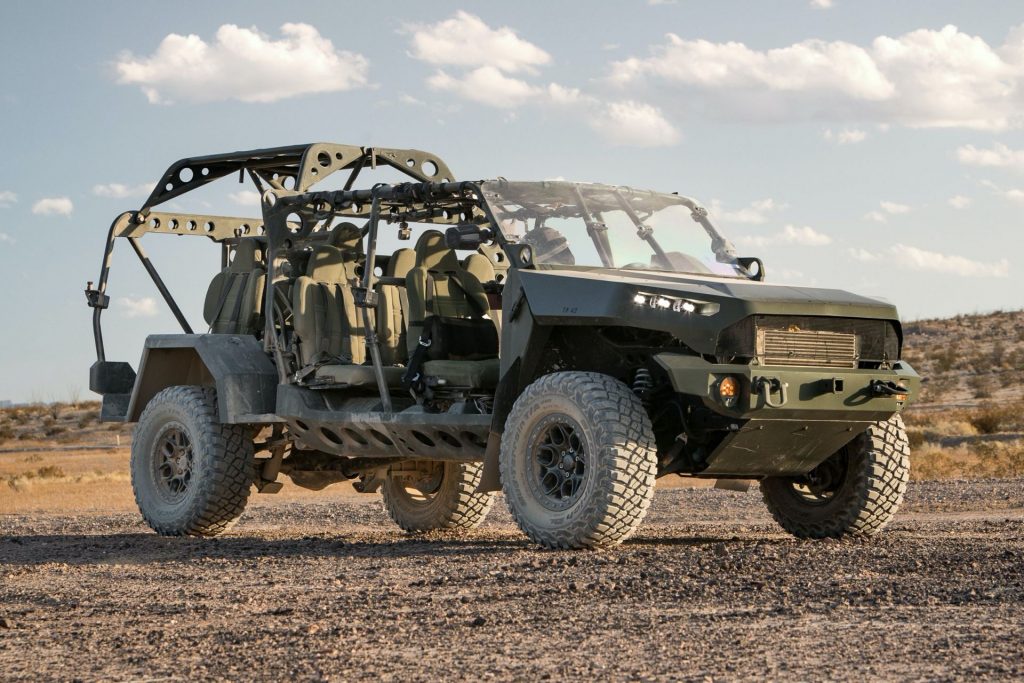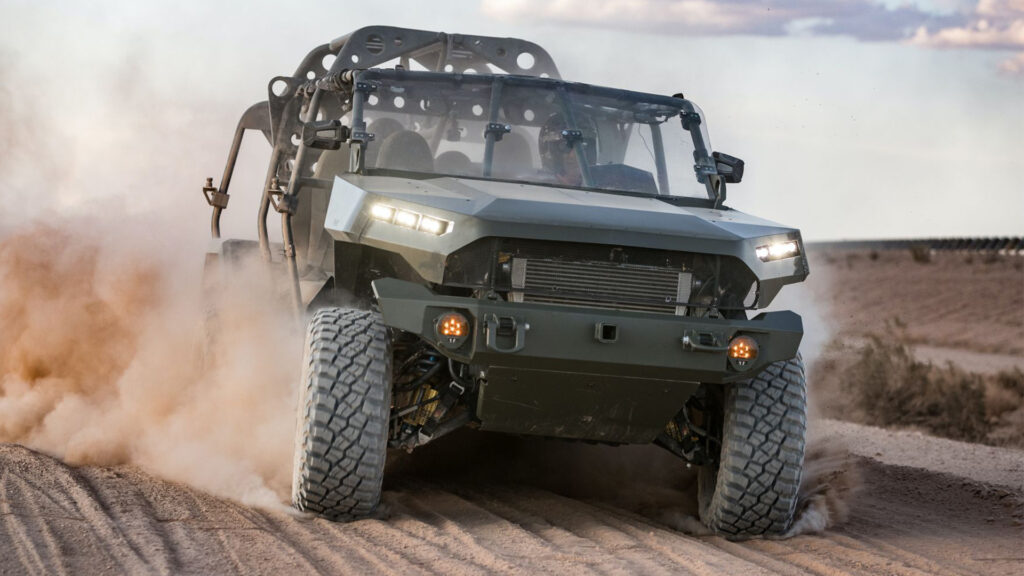GM Defense has been given the go-ahead from the U.S. Army to commence full-rate production of the Infantry Squad Vehicle (ISV) that it first unveiled in 2020.
The ISV is based on the Chevrolet Colorado ZR2 pickup and is made using 90% commercial-off-the-shelf parts, including many components from Chevrolet Performance and Multimatic dual spool-valve dampers. It also features jounce shocks, long-travel rear leaf springs, high-angle upper control arms, a steel drive shaft, ball-spline half shafts, underbody skid plates, 35-inch tires, and a cooling system from Chevrolet Performance.
GM Defense was awarded a $214.3 million contract in 2020 to “build, field and sustain” the ISV. More than 300 examples have been delivered to the U.S. Army with many going to the 82nd and 101st Airborne Divisions.
Read: GM Defense To Build Vehicles For The Military And Security In The UAE

GM Defense designed the Colorado-based military vehicle to be light enough so it can be sling loaded from a UH-60 Blackhawk helicopter and compact enough to fit inside a CH-47 Chinook helicopter. It is powered by a 2.8-liter Duramax four-cylinder turbo-diesel engine that produces 186 hp and 369 lb-ft (500 Nm) and is coupled to a six-speed automatic transmission. The company is initially building 649 ISVs for the U.S. Army.
“I’m proud of the GM Defense team for reaching this important milestone in the Infantry Squad Vehicle program and am thankful for the close relationship we maintain with our trusted U.S. Army program office customer,” GM Defense president Steve duMont said.
“Our flexibility during the pursuit of the ISV helped us win the early stages of the contract award and has since played a pivotal role in delivering the best value solution to the U.S. Army,” added GM Defense vice president of Product Development and Advanced Engineering, Rick Kewley. “Not only did customer feedback make the ISV better at an accelerated pace, but it also helped us bring to bear the engineering and manufacturing expertise from our parent company, General Motors, to add new capabilities while fulfilling the Army’s design and performance requirements. We remain confident in our ability to meet higher production quantities in the future.”




